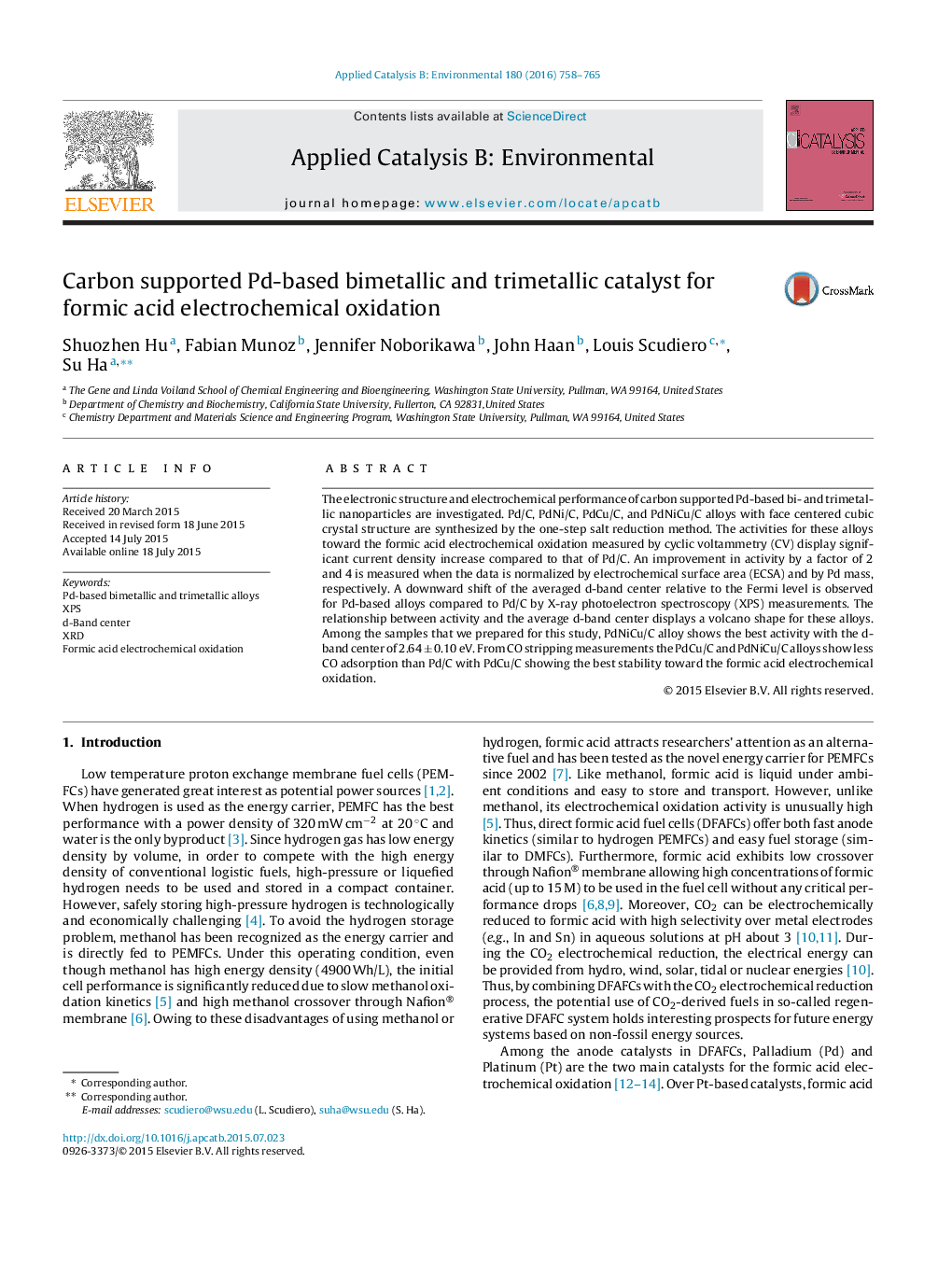| Article ID | Journal | Published Year | Pages | File Type |
|---|---|---|---|---|
| 45297 | Applied Catalysis B: Environmental | 2016 | 8 Pages |
•PdCu/C, PdNi/C, and PdNiCu/C alloys are synthesized with fcc crystal structure.•d-band center of Pd-based alloys shift away from the Fermi level compared to Pd/C.•A volcano relationship is obtained between FA oxidation activity and d-band center.•PdNiCu/C alloy shows the best activity with the d-band center of 2.64 ± 0.10 eV.•PdCu/C and PdNiCu/C shows the best stability toward formic acid oxidation.
The electronic structure and electrochemical performance of carbon supported Pd-based bi- and trimetallic nanoparticles are investigated. Pd/C, PdNi/C, PdCu/C, and PdNiCu/C alloys with face centered cubic crystal structure are synthesized by the one-step salt reduction method. The activities for these alloys toward the formic acid electrochemical oxidation measured by cyclic voltammetry (CV) display significant current density increase compared to that of Pd/C. An improvement in activity by a factor of 2 and 4 is measured when the data is normalized by electrochemical surface area (ECSA) and by Pd mass, respectively. A downward shift of the averaged d-band center relative to the Fermi level is observed for Pd-based alloys compared to Pd/C by X-ray photoelectron spectroscopy (XPS) measurements. The relationship between activity and the average d-band center displays a volcano shape for these alloys. Among the samples that we prepared for this study, PdNiCu/C alloy shows the best activity with the d-band center of 2.64 ± 0.10 eV. From CO stripping measurements the PdCu/C and PdNiCu/C alloys show less CO adsorption than Pd/C with PdCu/C showing the best stability toward the formic acid electrochemical oxidation.
Graphical abstractFigure optionsDownload full-size imageDownload as PowerPoint slide
